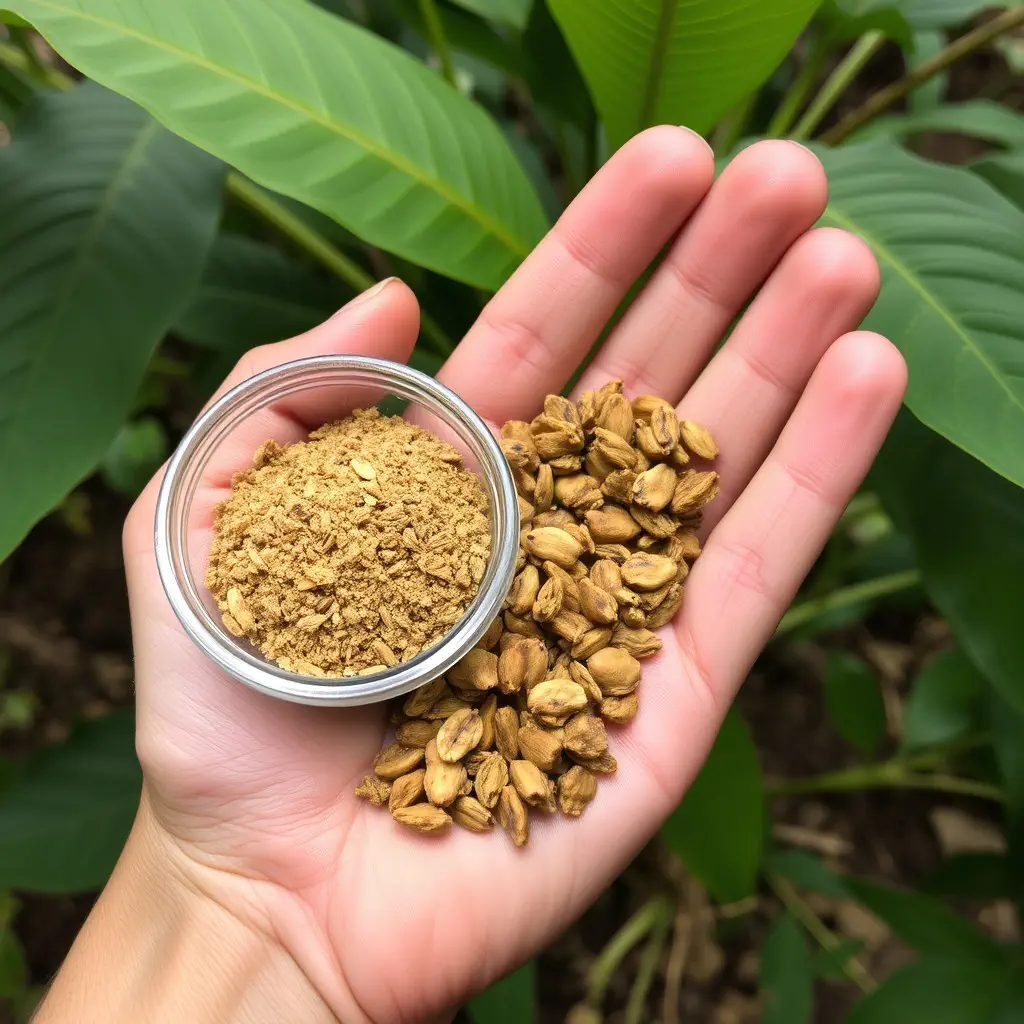Opioid withdrawal is a challenging process, but Kratom, a natural herb with opioid receptor interactions, provides relief from cravings, anxiety, and discomfort for up to 6 hours. Its effects typically last 4-6 hours, varying by strain, dosage, and individual tolerance. To safely and effectively manage withdrawal, combine Kratom with hydration, proper nutrition, stress reduction, and professional guidance, as it's not a cure but can aid in acute symptom management.
Kratom has emerged as a potential natural remedy for opioid withdrawal symptoms, offering relief in the form of pain management and anxiety reduction. This article delves into the science behind opioid withdrawal and explores Kratom’s role in easing these distressing symptoms. We examine the duration of Kratom’s effects for withdrawals, providing insights into its short-term and long-term benefits. Additionally, we offer considerations for safe use, emphasizing responsible and informed decision-making for individuals seeking alternative support during their recovery journey.
- Understanding Opioid Withdrawal and Kratom's Role
- The Duration of Kratom's Effects for Withdrawals
- Safe Use and Considerations for Opioid Withdrawal Support with Kratom
Understanding Opioid Withdrawal and Kratom's Role
Opioid withdrawal symptoms can be intense and challenging, often including physical discomfort, anxiety, and cravings. These symptoms typically emerge within a few hours to a day after ceasing opioid use and can last for several weeks. The severity and duration vary from person to person, depending on factors like the type of opioid, dosage, frequency of use, and individual tolerance.
Kratom, a natural herb derived from the plant Mitragyna speciosa, has gained attention as a potential aid in managing opioid withdrawal. Its effects can provide relief from withdrawal symptoms, offering a sense of calm and reducing anxiety. The active compounds in kratom interact with opioid receptors in the brain, mimicking some of the effects of opioids but without the same level of addiction potential. As a result, it may help alleviate cravings and ease physical discomfort during withdrawal. Additionally, kratom’s effects typically last for 2-6 hours, providing a controlled window of relief that can be particularly beneficial for managing acute withdrawal symptoms.
The Duration of Kratom's Effects for Withdrawals
Kratom’s effects can vary from person to person, but generally, the relief from opioid withdrawal symptoms lasts for several hours. A typical user may experience the full benefits of kratom, including its pain-relieving and mood-enhancing properties, for 4-6 hours after consumption. This duration makes it a useful tool in managing acute withdrawal symptoms, providing a window of comfort during what can be an intense and difficult period.
However, it’s important to remember that the length of kratom’s effects is influenced by several factors, including the individual’s metabolism, the type and dose of kratom consumed, and any other substances or medications also taken. For those using kratom as part of a withdrawal strategy, understanding these variables can help in planning dosages and timing to optimize its effectiveness while ensuring safety.
Safe Use and Considerations for Opioid Withdrawal Support with Kratom
When using Kratom for opioid withdrawal, it’s crucial to approach it with caution and an understanding of its properties. Kratom can provide temporary relief from withdrawal symptoms like anxiety, restlessness, and pain. However, it is not a cure or long-term solution, and users should not rely solely on it. The effects of kratom typically last between 4 to 6 hours, but this can vary based on the strain, dosage, and individual tolerance. It’s essential to start with lower doses and slowly increase as needed, under professional guidance if possible.
Safe use requires a comprehensive approach, including adequate hydration, maintaining a balanced diet, and engaging in stress-reduction techniques like meditation or exercise alongside Kratom therapy. Remember, while Kratom can offer support, it doesn’t replace medical treatment and counseling for opioid addiction. Discontinuing its use should be done gradually under professional supervision to manage potential withdrawal symptoms.
Kratom has emerged as a potential natural solution for managing opioid withdrawal symptoms, offering relief and reducing cravings. Understanding both the duration of its effects and safe usage practices is crucial for those seeking to utilize it as a supportive tool during recovery. With consistent research highlighting its benefits, kratom can play a significant role in navigating the challenges of opioid withdrawal, providing individuals with an alternative approach to traditional treatment methods. Its temporary yet effective nature, as discussed in this article, underscores the importance of further exploration and consideration for those looking to break free from the grip of opioids.






